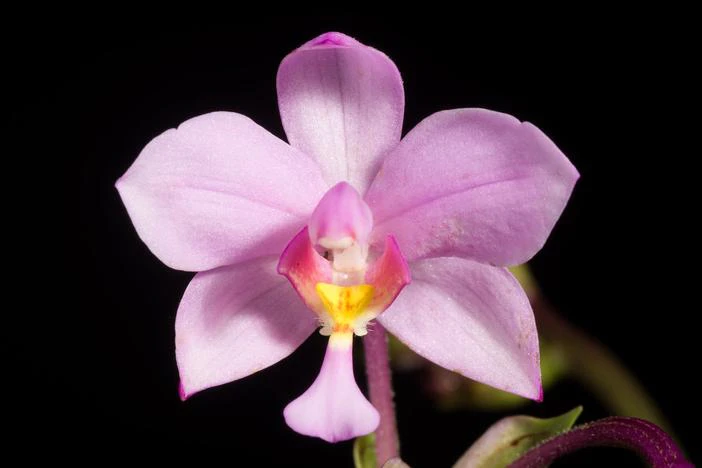Downy Calanthe
(Calanthe puberula)
Downy Calanthe (Calanthe puberula)
/
/

Motohiro Sunouchi
CC BY 2.0
Image By:
Motohiro Sunouchi
Recorded By:
Copyright:
CC BY 2.0
Copyright Notice:
Photo by: Motohiro Sunouchi | License Type: CC BY 2.0 | License URL: https://creativecommons.org/licenses/by/2.0/ | Uploader: Motohiro Sunouchi | Publisher: Flickr





























Estimated Native Range
Climate Requirements for Jamestown, New York
| This Plant | Your Site | Plant Suitability for Your Location | ||
|---|---|---|---|---|
| • Precipitation | 6" - 174" | 45" | Aquatic | Aquatic |
| • High Temp. | 48°F - 111°F | 81°F | Your summer temperatures are normal for this plant. | Excellent |
| • Low Temp. | 2°F - 56°F | 15°F | Your winter temperatures are normal for this plant | Excellent |
This plant should grow well at your location with about N inches per year (Y minutes per month) of irrigation.
Summary
Calanthe puberula, commonly known as Downy Calanthe, is a deciduous herbaceous plant native to the understory of montane forests and moist, shaded areas of Southeast Asia, including regions such as the Himalayas, China, and Japan. It typically grows at a moderate rate to a height of 1.5-2 feet (0.46-0.6 meters) and a width of 1-1.5 feet (0.3-0.5 meters). Downy Calanthe is characterized by its pleated leaves and racemes of white or yellow flowers that are quite showy, blooming profusely in the spring and summer months.
This orchid is valued for its ornamental flowers and is often used in shaded garden beds, woodland gardens, and as a container plant for outdoor patios or indoor settings. It requires consistent moisture and thrives in well-draining loam or clay soils with high organic matter. Downy Calanthe prefers part shade but can tolerate morning sun with afternoon shade. While generally disease-resistant, it can be susceptible to root rot if overwatered or if drainage is poor. It is not known to be invasive and is relatively low-maintenance, making it a suitable choice for gardeners looking to add exotic flair to their plant collection.CC BY-SA 4.0
This orchid is valued for its ornamental flowers and is often used in shaded garden beds, woodland gardens, and as a container plant for outdoor patios or indoor settings. It requires consistent moisture and thrives in well-draining loam or clay soils with high organic matter. Downy Calanthe prefers part shade but can tolerate morning sun with afternoon shade. While generally disease-resistant, it can be susceptible to root rot if overwatered or if drainage is poor. It is not known to be invasive and is relatively low-maintenance, making it a suitable choice for gardeners looking to add exotic flair to their plant collection.CC BY-SA 4.0
Plant Description
- Plant Type: Herb
- Height: 1.5-2 feet
- Width: 1-1.5 feet
- Growth Rate: Moderate
- Flower Color: White, Yellow
- Flowering Season: Spring, Summer
- Leaf Retention: Deciduous
Growth Requirements
- Sun: Part Shade
- Water: Medium
- Drainage: Medium
Common Uses
Border Plant, Butterfly Garden, Low Maintenance, Potted Plant
Natural Habitat
Understory of montane forests and moist, shaded areas
Other Names
Common Names:
Scientific Names: Calanthe puberula, Alismorchis puberula, Alismorchis reflexa, Alismorkis puberula, Alismorkis reflexa, Calanthe amoena, Calanthe lepida, Calanthe okushirensis, Calanthe puberula subsp. formosana
GBIF Accepted Name: Calanthe puberula